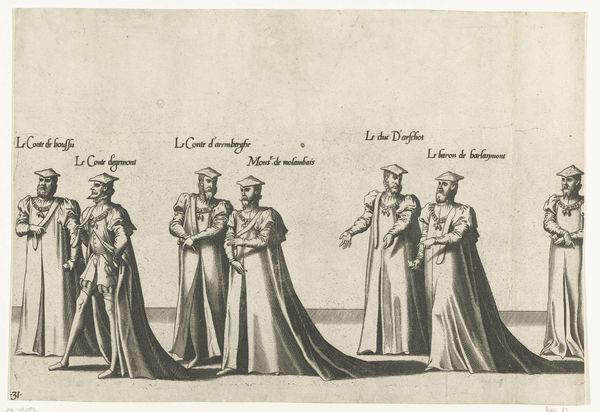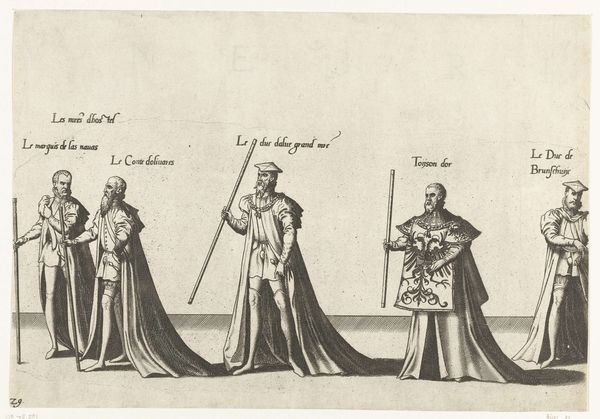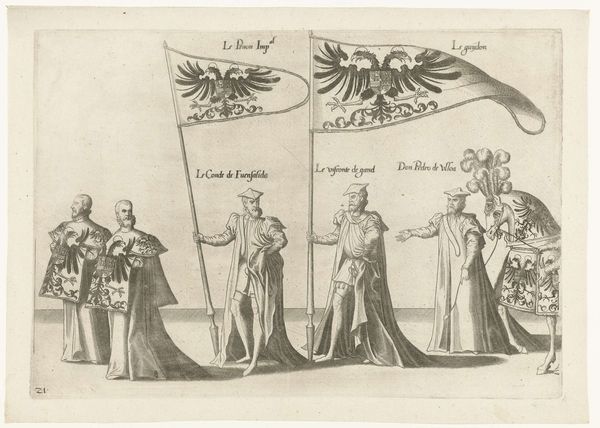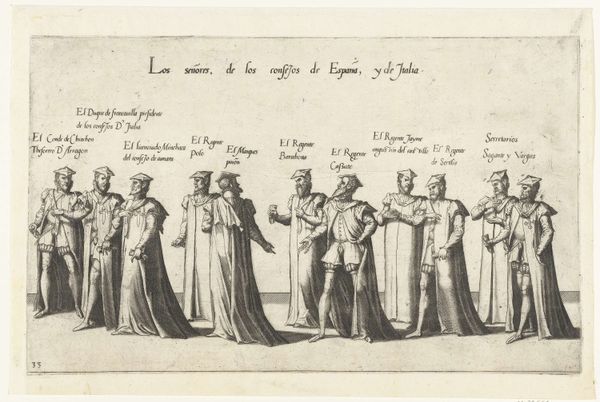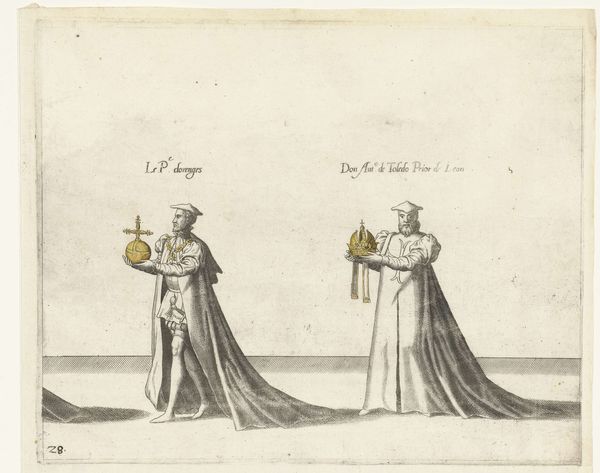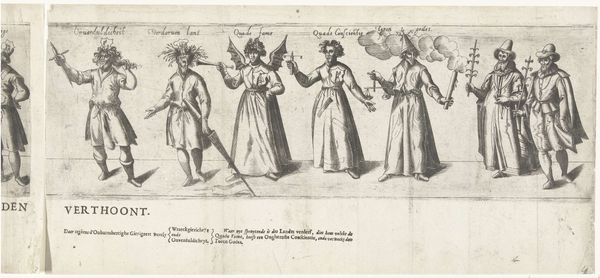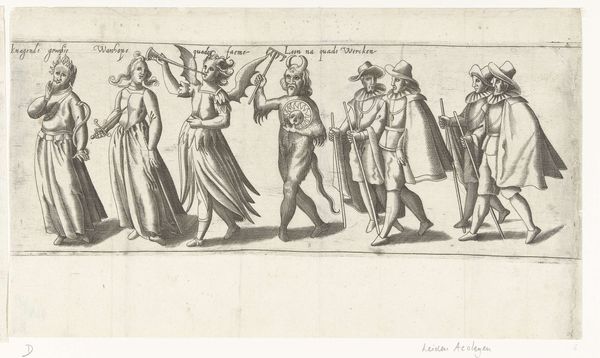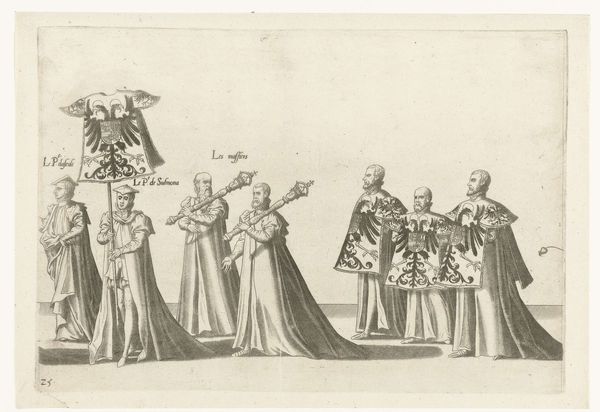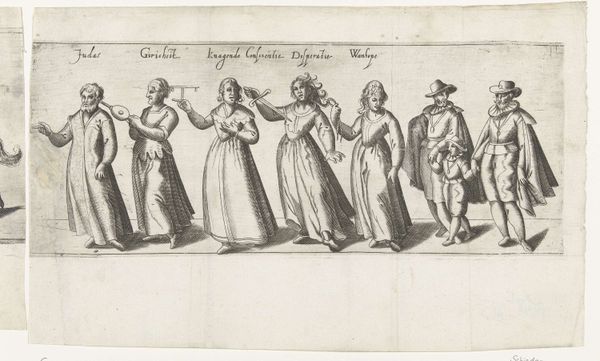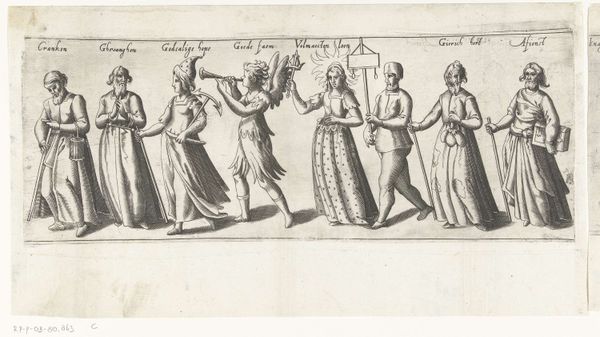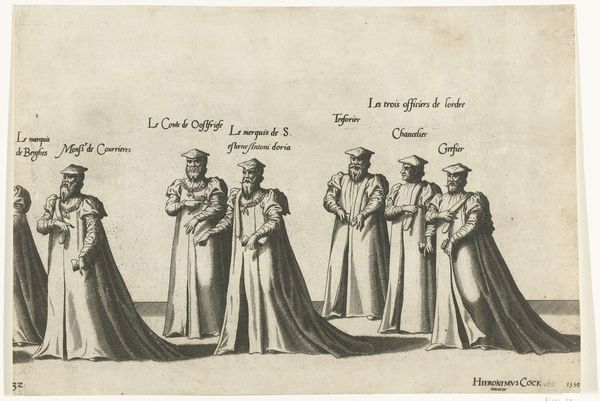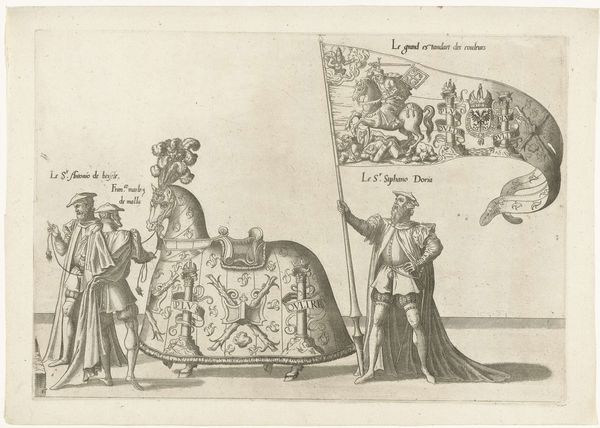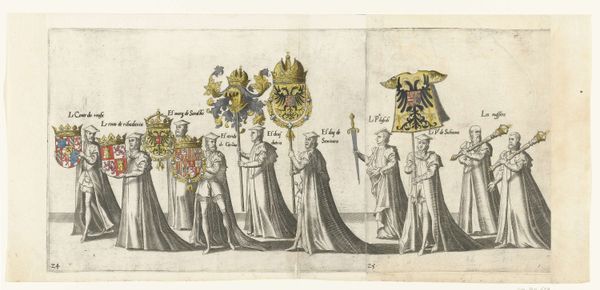
print, engraving
#
portrait
# print
#
mannerism
#
genre-painting
#
engraving
Dimensions: height 241 mm, width 340 mm
Copyright: Rijks Museum: Open Domain
Editor: Here we have "Deel van de optocht, nr. 27," or "Part of the Procession, No. 27," an engraving made sometime between 1559 and 1619 by Joannes van (I) Doetechum, residing in the Rijksmuseum collection. These figures in their elaborate robes seem incredibly formal, almost staged. What story do you think this print tells? Curator: Well, focusing on the materiality, we see an engraving, a process involving skilled labor, mass reproduction, and dissemination of imagery to a broad audience. These are not unique, hand-painted portraits destined for elite patrons, but rather relatively accessible images reflecting and perhaps shaping contemporary ideas about status and power. Editor: So, the medium itself played a role in who saw and understood this image. Curator: Precisely! Consider how printmaking democratized imagery. Prior to such methods, only the elite could afford to view particular ideas. Do these figures represent real people, or archetypes of status during that period, circulating not just amongst nobility but among the rising merchant classes? Editor: I guess it blurs the lines between record and aspirational material culture. Were prints like this influencing fashion or civic roles? Curator: A potent question! These costumes weren't just clothes but represented power and social standing within a rigid hierarchy. These figures become commodities circulating amongst a viewing public who might internalize certain ideologies about society. Does examining the wear of their clothing suggest this image was intended as documentation of real materials, rather than merely idealized impressions? Editor: That makes me look at the image completely differently. Seeing it as a commodity of ideas and influence... I hadn’t thought about the "who" behind viewing practices back then. Curator: Exactly. By shifting our focus to the materiality of the image, we reveal the complexities behind not only the art making itself but also the system through which imagery held material, tangible meaning in culture.
Comments
No comments
Be the first to comment and join the conversation on the ultimate creative platform.

